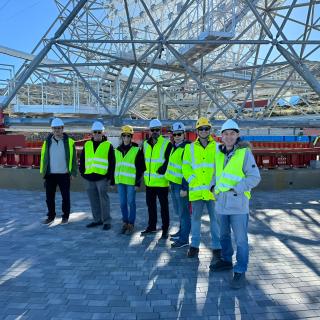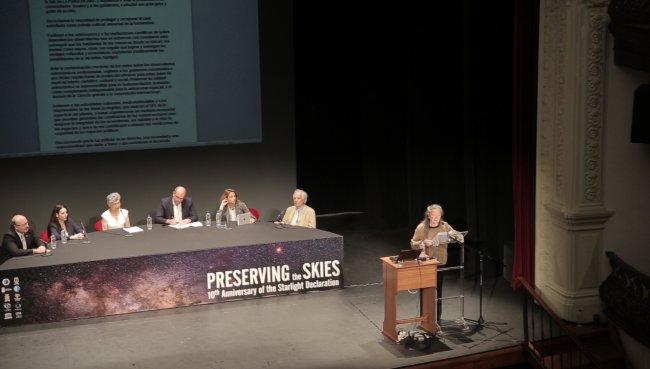It may interest you
-
 Gravity has shaped our cosmos. Its attractive influence turned tiny differences in the amount of matter present in the early universe into the sprawling strands of galaxies we see today. A new study using data from the Dark Energy Spectroscopic Instrument (DESI) has traced how this cosmic structure grew over the past 11 billion years, providing the most precise test to date of gravity at very large scales. DESI is an international collaboration of more than 900 researchers, included the Instituto de Astrofísica de Canarias (IAC), from over 70 institutions around the world and is managed byAdvertised on
Gravity has shaped our cosmos. Its attractive influence turned tiny differences in the amount of matter present in the early universe into the sprawling strands of galaxies we see today. A new study using data from the Dark Energy Spectroscopic Instrument (DESI) has traced how this cosmic structure grew over the past 11 billion years, providing the most precise test to date of gravity at very large scales. DESI is an international collaboration of more than 900 researchers, included the Instituto de Astrofísica de Canarias (IAC), from over 70 institutions around the world and is managed byAdvertised on -
 This week, CTAO Managing Director, Stuart McMuldroch, and Construction Programme Manager, Volker Heinz, traveled to the Canary Islands for a productive visit with the hosting partners at the Instituto de Astrofísica de Canarias (IAC) and colleagues from the CTAO Large-Sized Telescope (LST) Collaboration. The team was warmly welcomed at the IAC Headquarters in Tenerife by IAC Director, Valentín Martínez, marking the first official meeting between the two directors since Valentín recently assumed this role. Hosted by Ramón García López, Principal Investigator of the CTAO group at the IAC, theAdvertised on
This week, CTAO Managing Director, Stuart McMuldroch, and Construction Programme Manager, Volker Heinz, traveled to the Canary Islands for a productive visit with the hosting partners at the Instituto de Astrofísica de Canarias (IAC) and colleagues from the CTAO Large-Sized Telescope (LST) Collaboration. The team was warmly welcomed at the IAC Headquarters in Tenerife by IAC Director, Valentín Martínez, marking the first official meeting between the two directors since Valentín recently assumed this role. Hosted by Ramón García López, Principal Investigator of the CTAO group at the IAC, theAdvertised on -
 Research led by the Instituto de Astrofísica de Canarias (IAC) has used an innovative technique based on artificial intelligence to study how stars form in galaxies. By analysing 10 000 nearby galaxies, the team have discovered that most stars are born within their own galaxy. Galactic mergers, while important, are not the main source of new stars. Furthermore, the study reveals that more massive galaxies are more affected by these mergers. These results, published in Nature Astronomy, provide new clues about the complex history of galaxies and their evolution over time. Most galaxies do notAdvertised on
Research led by the Instituto de Astrofísica de Canarias (IAC) has used an innovative technique based on artificial intelligence to study how stars form in galaxies. By analysing 10 000 nearby galaxies, the team have discovered that most stars are born within their own galaxy. Galactic mergers, while important, are not the main source of new stars. Furthermore, the study reveals that more massive galaxies are more affected by these mergers. These results, published in Nature Astronomy, provide new clues about the complex history of galaxies and their evolution over time. Most galaxies do notAdvertised on
